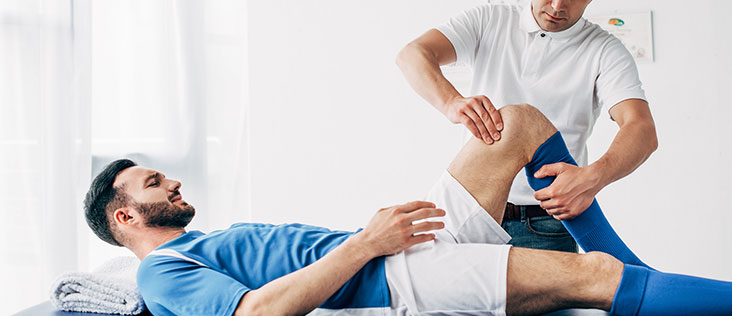
What are Sports Injuries?
“No pain, no gain!”
“Pain is weakness leaving your body.”
How many times have you heard this? You don’t need to be a professional sports person to have been told either of these.
Whilst it’s difficult to reach our sporting goals without a little bit of effort (and sometimes a little pain as well), we need to think about what the type of pain is.
We should not confuse sore muscles (which testifies to a hard workout) with pain that can come after an injury. They are very different things! If there is pain, more often than not, it is the sign that something is not quite right. You probably need to consult or, at the very least, rest up for a couple of days to see how you feel.
There are a number of different injuries that can occur and this will depend on the sport. It will also depend on the person as things such as muscle strength and conditioning, training and endurance.
- Ligament Sprains: A ligament is a soft tissue that connects a bone to another. Contact sports like football or rugby have a high chance of damaging the knee ligaments. Severe ligament injuries lead to intense pain and swelling around the joint. Walking and putting weight on the joint becomes difficult!
- Meniscus Injuries: A meniscus is a thin cartilage covering a few joints in our body, like the knee. Injuries to the menisci are common in the knee contact sports. It mostly occurs when the knee is twisted awkwardly. If the knee pops or gives way, this is a sign of a problem with the meniscus. For more information about knee injuries, please follow the link at the bottom of the page.
- Tennis Elbow and Golfer’s Elbow: As the name suggests, tennis elbow and golfer’s elbow commonly seen in tennis and golf players. It is now also becoming more common in the upper arm in hockey players or cricket batters. Any sudden extension of the elbow has an impact on the muscle group around the elbow. Sometimes the pain extends down to the wrists as well. For more information about elbow injuries, please follow the link at the bottom of the page.
- Shin Splints: This is commonly seen in runners and people who do competitive walking. The muscle at the front of the shin is repeatedly stressed from the weight put on the leg and often made worse when the hip and back muscles are weak.
- Muscle Strains: Muscles strains often happen when proper warm ups are not done and the muscles are expected to work at maximum capacity before they are ready! Football players often experience hamstring strains, where you feel a pull in the back of the thigh.
- Fractures and Dislocations: High impact activities or trauma can lead to fractures and dislocations. The shoulder joint is the most commonly dislocated joint, often seen in gymnasts or javelin throwers. For more information about shoulder injuries, please follow the link at the bottom of the page.
- Brain injuries: Internal bleeding in the brain can have severe impacts on the body like paralysis and seizures. Concussion is the injury that is the most frequently seen and most sports have now got specialised processes in place for head injuries. These types of injuries are most common in contact sports.
- Sudden cardiac accidents: These are now being seen more often, even in professional sports. As more effort is made, there is more strain put on the heart. In the majority of cases (but by no means all), this is caused by the person pushing themselves too hard without the corresponding fitness level (such as somebody who has not done any training playing a competitive football match or attempting to run a long distance).
Common signs and symptoms of musculoskeletal sports injuries:
- Pain
- Swelling
- Redness
- Loss of movement in the joint
What should I do if I have got one or more of these signs/symptoms?
Follow the RICE protocol!!!
R – Rest: Avoid putting any weight on painful area
I – Icing: Apply ice wrapped in a damp towel on the injured area for at least 20-25 minutes.
C – Compression: If there is swelling, use a crepe bandage to compress the area and wrap it.
E – Elevation: Elevate your limb slightly above the level of your heart. This helps the swelling to go down.
Ideally, the swelling will last for a day or two. If symptoms persist, then please contact your GP or Physiotherapist as soon as possible.

 01622 94 20 33
01622 94 20 33 admin@xcelhealth.co.uk
admin@xcelhealth.co.uk

